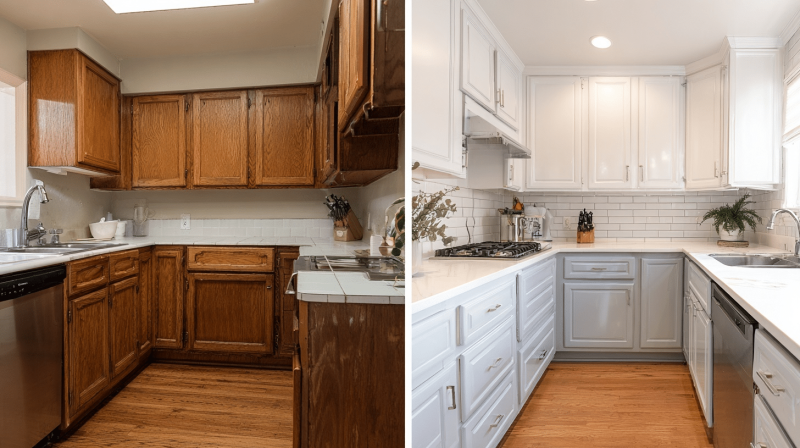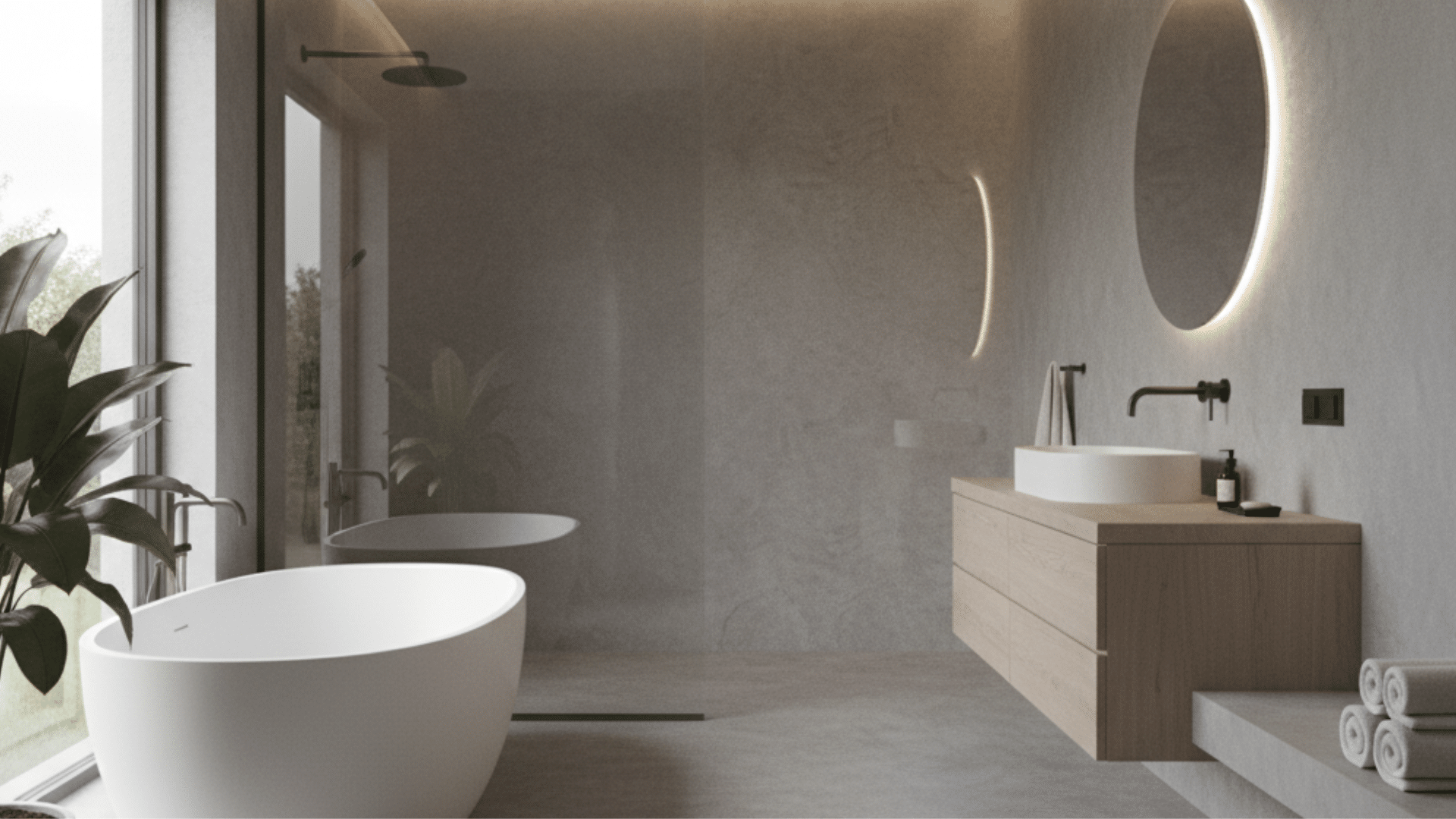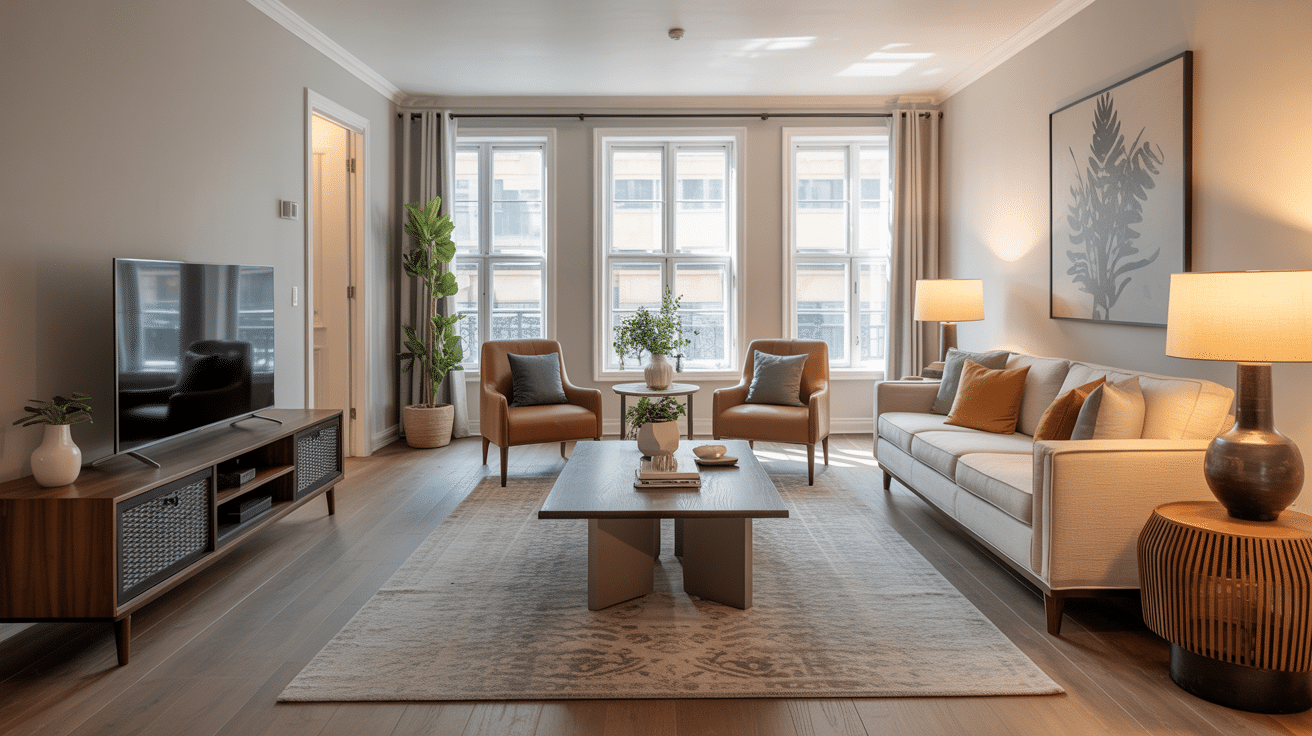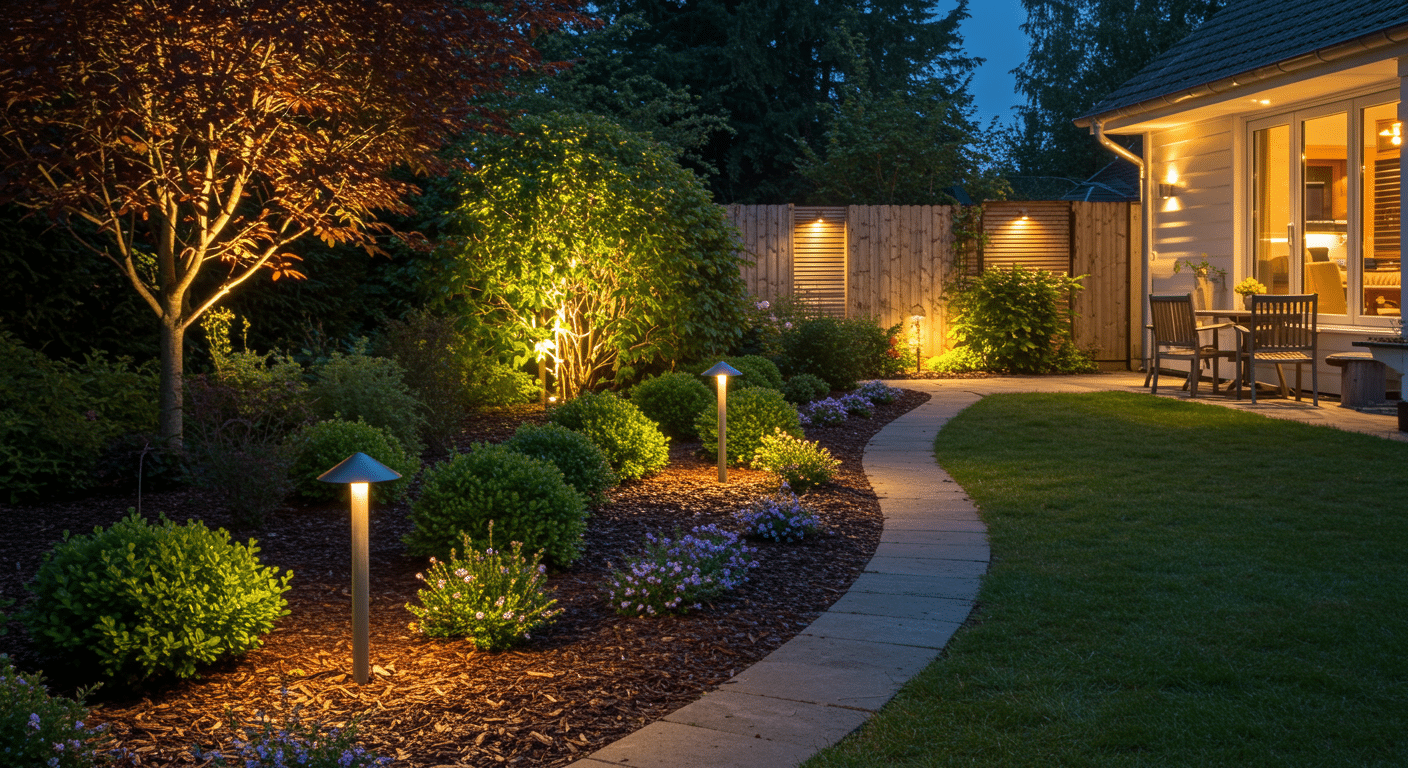Kitchen cabinet refacing seems like the perfect solution when your cabinets look outdated but still function well. I get it – you want a fresh look without the massive expense of full replacement.
But here’s what most homeowners don’t realize: refacing comes with its own set of challenges that can turn your dream project into a costly headache. I’m going to walk you through the most common problems people face.
In this blog, I’ll share the problems with refacing kitchen cabinets you might encounter, from adhesion failures to color matching nightmares. You’ll learn what to watch out for and how to avoid these pitfalls before you start your project
What is Cabinet Refacing?
Cabinet refacing is a home improvement process where the visible parts of kitchen cabinets, such as doors, drawer fronts, and hardware, are replaced to refresh the cabinets’ appearance, while the existing cabinet boxes remain intact.
The old doors and drawers are removed, and new doors, drawer fronts, and hardware like hinges and knobs are installed.
The cabinet frames are then sanded, primed, and covered with finishes like wood veneer, laminate, or rigid thermofoil to match the new fronts.
This method offers a cost-effective way to achieve a modern, personalized kitchen look without the expense and disruption of fully replacing cabinets.
Cabinet refacing is ideal if the cabinet structure is still solid but in need of an aesthetic upgrade.
When to Consider Cabinet Refacing?
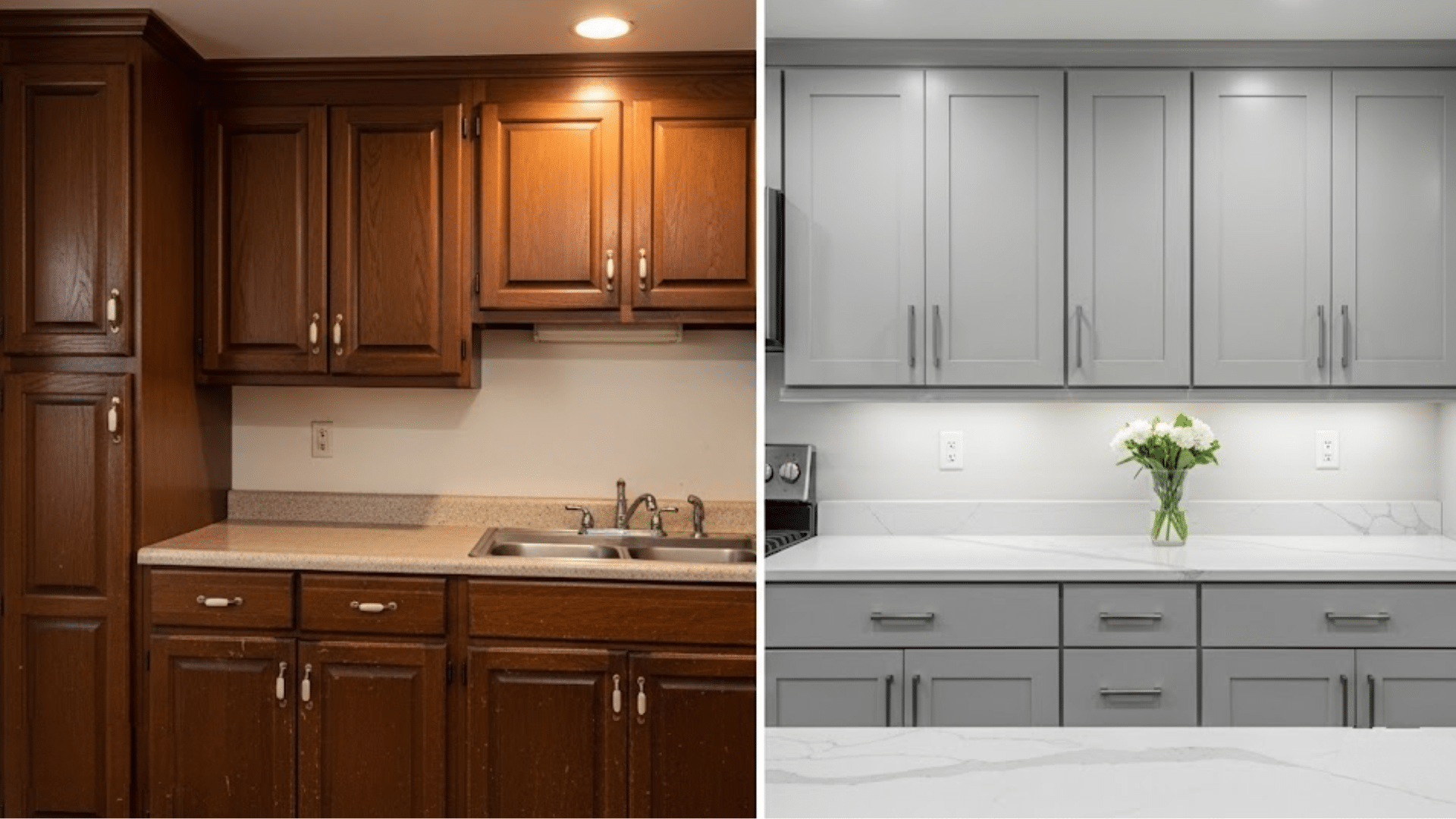
I consider cabinet refacing when my existing cabinets are still structurally sound but look dated and need a fresh update. It’s a smart choice if I’m happy with my kitchen’s current layout because refacing won’t change the cabinet arrangement.
I also look at refacing if I want to save money; it’s often 30% to 50% less expensive than full cabinet replacement, and if I want less disruption during renovation, since the cabinet boxes stay in place.
Refacing is perfect when I want new doors, drawer fronts, and hardware to modernize the look without tearing out everything.
However, if the cabinets are damaged or if I want to alter the layout or fix functional issues, I know full replacement would be better
Top Problems with Refacing Kitchen Cabinets
Refacing kitchen cabinets is a popular way to update your kitchen without a full renovation, but it comes with its own set of challenges. From material issues to installation mistakes, these problems can affect both the look and functionality of your kitchen.
The following are the problems with refacing kitchen cabinets I have encountered or learned about when refacing kitchen cabinets, explained in detail.
1. Peeling Veneer and Laminates
One big issue I’ve seen is the new veneer or laminate peeling off over time. This usually happens because the adhesive used isn’t strong enough or the surface wasn’t properly prepared.
When the layers start coming loose, it spoils the kitchen’s appearance. I always recommend using high-quality materials and professional application to avoid this problem.
2. Mismatched Styles and Colors
Matching the new cabinet faces with the existing kitchen style can be tricky. If the colors or finish don’t perfectly align, the cabinets can look out of place or mismatched.
This aesthetic mismatch disrupts the kitchen’s harmony, so it’s important to select materials carefully and consider how they blend with existing elements.
3. Poor Door Alignment
Another frequent problem is getting the cabinet doors to align properly after refacing. Misalignments lead to gaps, sticking doors, or uneven spacing, which are not only unsightly but also annoying in daily use.
Precision in measurement and installation is key to ensuring everything lines up perfectly.
4. Structural Issues Inherited From Old Cabinets
Refacing only changes the exterior, leaving the inside cabinet frames untouched. If your original cabinets are warped, cracked, or damaged, refacing won’t fix those structural problems.
Ignoring this can lead to lasting functional issues, so I always check cabinet integrity before choosing refacing.
5. Adhesive and Glue Failures
Using substandard or inappropriate glues can cause separation between veneers and cabinet boxes.
This failure can show up as bubbling, peeling edges, or completely detached surfaces. It underscores the need for trusted adhesives and professional handling to ensure durability.
6. Damage Caused During Removal
Removing old cabinet doors, drawers, and hardware without care can cause damage to the underlying cabinet structure. This damage might require expensive repairs or even replacement.
I find it best to hire skilled installers who can take off parts safely without harming the cabinets.
7. Underestimating Project Complexity
Refacing is not a simple weekend project; measurement precision, surface prep, and installation techniques are complex. Many DIYers encounter gaps, overlaps, or uneven finishes due to a lack of experience.
I advise realistic expectations and possibly hiring professionals.
8. Unsuitable Cabinets for Refacing
Not all cabinets are good candidates for refacing. Cabinets that are water-damaged, heavily warped, or built poorly are better replaced.
Refacing these can lead to poor results and short-lived improvements. A thorough initial inspection is crucial to prevent wasted effort.
9. Reduced Return on Investment
While refacing looks great, it might not increase home value as much as full cabinet replacement. Refacing doesn’t improve layout or interior organization, which many buyers want.
I consider this carefully before deciding on refacing for long-term value
Pros and Cons of Refacing Kitchen Cabinets
Refacing kitchen cabinets can be a smart alternative to a full renovation, offering a refreshed look without tearing everything out. But like any home improvement option, it comes with trade-offs worth considering before you commit.
The following are the problems with refacing kitchen cabinets with pros as well.
| Pros | Cons |
|---|---|
| Cost-effective, typically 30–50% cheaper than new cabinets. | Limited structural upgrades don’t fix damaged cabinet boxes. |
| Faster installation, often completed in 2–5 days. | Not suitable for all cabinets; old, warped, or poor-quality boxes aren’t good candidates. |
| Less mess and disruption, minimal demolition or dust. | Design limitations, layout stays the same; no added storage. |
| Eco-friendly, reuses existing cabinet structure. | May not increase home value as much as a full remodel. |
| Variety of finish options, including veneer, laminate, or wood. | Not a long-term fix, if cabinets are near the end-of-life, replacement may be better. |
Is Refacing Kitchen Cabinets a Smart Decision?
I think refacing kitchen cabinets is a smart decision if I like the current layout of my kitchen and my cabinets are still structurally sound.
It’s a cost-effective way to give my kitchen a fresh look without the expense and hassle of a full cabinet replacement.
Refacing typically costs 30% to 50% less and causes less disruption since the cabinet boxes remain in place. Plus, it’s faster, often done in just a few days, and eco-friendly because it reuses existing materials.
However, I know it’s not ideal if I want to change the layout, have damaged cabinets, or need a long-term, durable solution. Overall, for a budget-friendly update, I feel cabinet refacing is a practical option that balances cost, time, and aesthetics well.
The Bottom Line
Cabinet refacing can transform your kitchen, but I’ve shown you it’s not always the smooth process many companies promise.
From veneer peeling to mismatched finishes, these problems with refacing kitchen cabinets can cost you time and money.
Start by getting multiple quotes from experienced contractors.
Ask to see their previous work and check references. Don’t rush into the cheapest option; quality matters here.
If you’re handy with tools, some issues like loose hinges are fixable. But for major problems like adhesion failures, call the professionals immediately.


